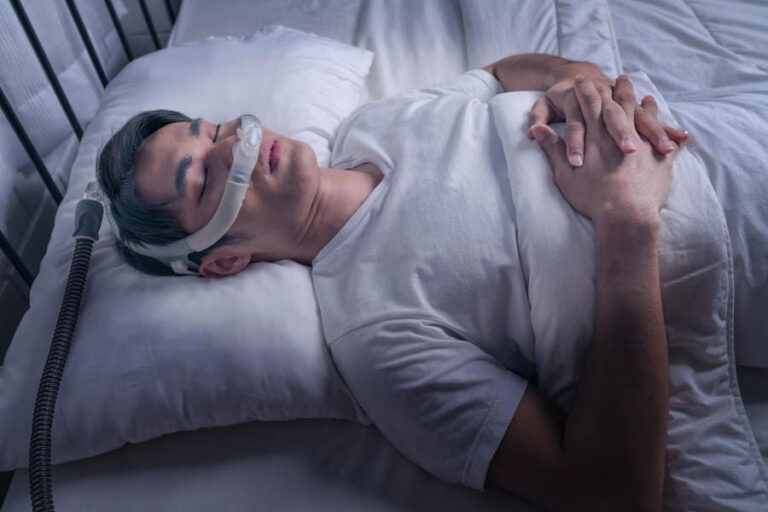Armodafinil vs. Modafinil: Which One Should You Take?
Armodafinil and Modafinil are wakefulness-promoting agents prescribed for conditions like narcolepsy, shift work sleep disorder (SWSD), and obstructive sleep apnea (OSA). While they share similarities, their pharmacokinetics, efficacy, and duration of action differ. This article examines both drugs using scientific journal studies and FDA-approved data to provide an evidence-based comparison.
What Are Modafinil and Armodafinil?
Modafinil is a racemic mixture containing both the R- and S-enantiomers, while Armodafinil is the isolated R-enantiomer, which is responsible for the longer-lasting wakefulness effect (Darwish et al., 2009).
Both drugs work by inhibiting dopamine reuptake via the dopamine transporter (DAT), increasing dopamine levels in the brain without directly acting as dopamine agonists (FDA, 2007). This mechanism differs from traditional stimulants like amphetamines.
Efficacy: Which One Works Better?
1. Wakefulness Duration
- Armodafinil maintains higher plasma concentrations later in the day compared to Modafinil, leading to more sustained wakefulness (Darwish et al., 2009).
- A randomized clinical trial found no significant difference in wakefulness improvement between the two drugs for shift workers, but Armodafinil users experienced less fatigue at the end of the shift (Tembe et al., 2011).
2. Effectiveness in Sleep Disorders
- A meta-analysis concluded that both Modafinil and Armodafinil effectively reduce excessive daytime sleepiness (EDS) in obstructive sleep apnea (OSA) patients (Chapman et al., 2016).
- Studies found Modafinil’s wakefulness-promoting effect weakens in the last third of a night shift, while Armodafinil sustains its effects longer (Darwish et al., 2009).
Verdict: While both drugs improve wakefulness, Armodafinil has a longer-lasting effect, making it preferable for individuals requiring sustained alertness.
Side Effects and Safety Considerations
1. Common Side Effects
Both drugs have similar side effect profiles, with the most reported being:
- Headache
- Nausea
- Insomnia
- Dizziness (FDA, 2017)
2. Serious Risks
- Psychiatric effects: Cases of anxiety, mania, hallucinations, and suicidal ideation have been reported in some patients (FDA, 2007).
- Cardiovascular concerns: Modafinil and Armodafinil increase heart rate and blood pressure, requiring caution in patients with heart conditions (FDA, 2017).
- Severe skin reactions: Rare cases of Stevens-Johnson Syndrome (SJS) have been reported, requiring immediate discontinuation if a rash develops (FDA, 2007).
3. Long-Term Safety Considerations
- No placebo-controlled trials have assessed Modafinil or Armodafinil use beyond 12 weeks, so their long-term safety profile remains uncertain (FDA, 2016).
- Chronic use may require periodic reassessment to determine continued need and monitor side effects, especially cardiovascular and psychiatric symptoms (FDA, 2016).
4. Pediatric Use and Risks
- Modafinil and Armodafinil are NOT FDA-approved for pediatric patients, but some off-label studies have explored their use in narcoleptic children.
- Ivanenko et al. (2017) found that Modafinil can cause increased psychiatric side effects in children, including aggression and suicidal thoughts.
- Due to the high risk of severe skin reactions (e.g., Stevens-Johnson Syndrome) and lack of long-term safety data, pediatric use is discouraged (FDA, 2007).
Dosage and Pharmacokinetics
| Feature | Modafinil | Armodafinil |
|---|---|---|
| Standard Dose | 200 mg/day | 150 mg/day |
| Half-Life | ~15 hours | ~15 hours |
| Peak Effect | 2-4 hours | 2-6 hours |
| Duration | 8-10 hours | 12-14 hours |
- Armodafinil’s higher plasma concentration in later hours means patients may require a lower dose for the same effect (Darwish et al., 2009).
- Both drugs are metabolized by the liver (CYP3A4 pathway) and can interact with medications like oral contraceptives, blood thinners, and antidepressants (FDA, 2017).
Which One Should You Choose?
| Factor | Best Choice | Scientific Reason |
|---|---|---|
| Short-Term Use | Modafinil | Similar efficacy but cheaper |
| Long-Term Wakefulness | Armodafinil | Higher plasma levels later in the day |
| Fewer Side Effects | Equal | Both have comparable safety profiles |
| Cardiovascular Risk | Caution for both | May increase blood pressure |
Ultimately, both medications are effective, but Armodafinil may be preferable for individuals needing longer-lasting wakefulness.
Final Verdict: Science-Backed Comparison
- For shorter wakefulness needs → Modafinil is sufficient
- For extended alertness (e.g., long night shifts) → Armodafinil is superior
- Side effects and safety profiles are nearly identical
- Consult a doctor before switching medications
References
- Chapman, J. L., Vakulin, A., Hedner, J., Yee, B. J., & Marshall, N. S. (2016). Modafinil/armodafinil in obstructive sleep apnoea: A systematic review and meta-analysis. European Respiratory Journal, 47(5), 1420-1428. https://doi.org/10.1183/13993003.01509-2015
- Darwish, M., Kirby, M., Hellriegel, E. T., & Robertson, P. Jr. (2009). Armodafinil and modafinil have substantially different pharmacokinetic profiles despite having the same terminal half-lives: Analysis of data from three randomized, single-dose, pharmacokinetic studies. Clinical Drug Investigation, 29(9), 613-623. https://doi.org/10.2165/11315280-000000000-00000
- Ivanenko, A., Kek, L., & Grosrenaud, J. (2017). Long-term use of modafinil and armodafinil in pediatric patients with narcolepsy. Sleep, 40(suppl_1), A354–A355. https://doi.org/10.1093/sleepj/zsx050.953
- Tembe, D. V., Dhavale, A., Desai, H., Mane, D. N., Raut, S. K., Dhingra, G., Sardesai, U., Saoji, S., Rohra, M., Shinde, V. G., Padsalge, M., Paliwal, A., Abbasi, K., Devnani, P., Papinwar, S., Phadke, S., Mehta, H., & Bhailume, V. (2011). Armodafinil versus modafinil in patients of excessive sleepiness associated with shift work sleep disorder: A randomized double-blind multicentric clinical trial. Neurology Research International, 2011, 514351. https://doi.org/10.1155/2011/514351
- U.S. Food and Drug Administration. (2007). PROVIGIL® (modafinil) tablets [prescribing information]. U.S. Department of Health and Human Services. Retrieved from https://www.accessdata.fda.gov/drugsatfda_docs/label/2007/020717s020s013s018lbl.pdf
- U.S. Food and Drug Administration. (2017). NUVIGIL® (armodafinil) tablets [prescribing information]. U.S. Department of Health and Human Services. Retrieved from https://www.accessdata.fda.gov/drugsatfda_docs/label/2017/021875s023lbl.pdf








